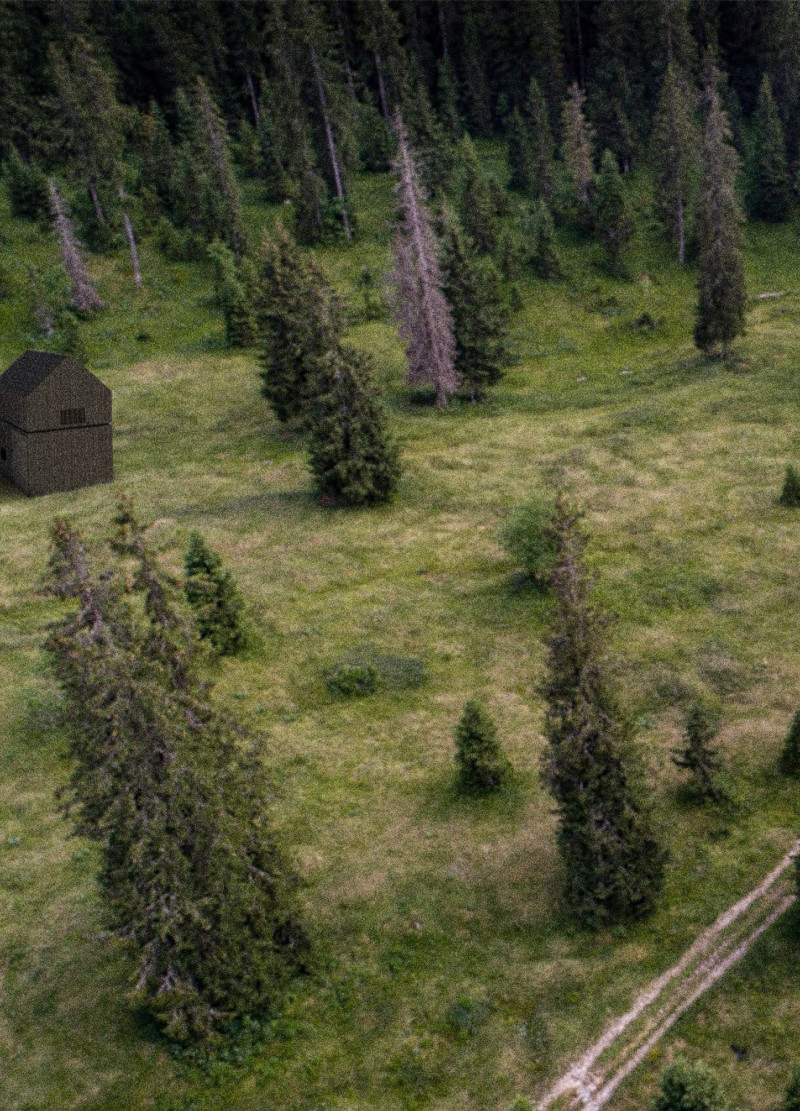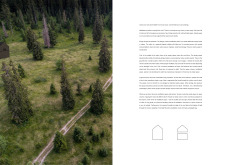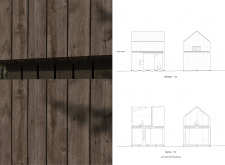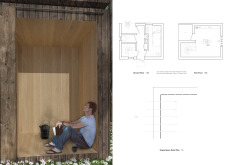5 key facts about this project
The silent meditation cabin is designed to create a calm space that connects with its natural surroundings. Located in a peaceful environment, it serves as a retreat for those seeking a deeper understanding of themselves through meditation. The design focuses on the importance of empty space, which has been incorporated thoughtfully to enhance the experience of those using the cabin while allowing interaction with the landscape.
Central to the design is an empty space that allows for the flow of air and sound. This void is framed by wooden boards that are placed with gaps, enabling the wind to pass through and produce gentle sounds similar to musical instruments. These sounds enrich the meditative atmosphere, encouraging users to engage with the natural setting more fully.
The upper meditation space appears to float above the ground level, a design element achieved by setting the wooden boards back from the exterior walls. This approach not only creates a sense of lightness but also adds visual interest to the overall structure. The design supports a peaceful atmosphere where meditation is enhanced by the connection to the outside environment.
At the ground level, the cabin offers essential amenities for comfortable living, including a bed, a dry toilet, a water reserve, and a fireplace. A small desk is included for writing or drawing, providing views of the forest through carefully placed windows. An empty space at the end of the corridor can also function as a sunroom, blending indoor and outdoor experiences and strengthening the relationship between the cabin and the nature surrounding it.
Access to the upper meditation area and the terrace is provided by a staircase, which also offers elevated views of the landscape. This terrace serves as an additional outdoor space for quiet contemplation. Inside the meditation room, a Korean Bell adds a calming sound that enhances the experience of stillness. The roof features a ridge incision that allows light to enter through narrow skylights, creating intricate patterns of sunlight inside. This play of light further enriches the interior space, adding to the overall sensory experience of the cabin.





















































